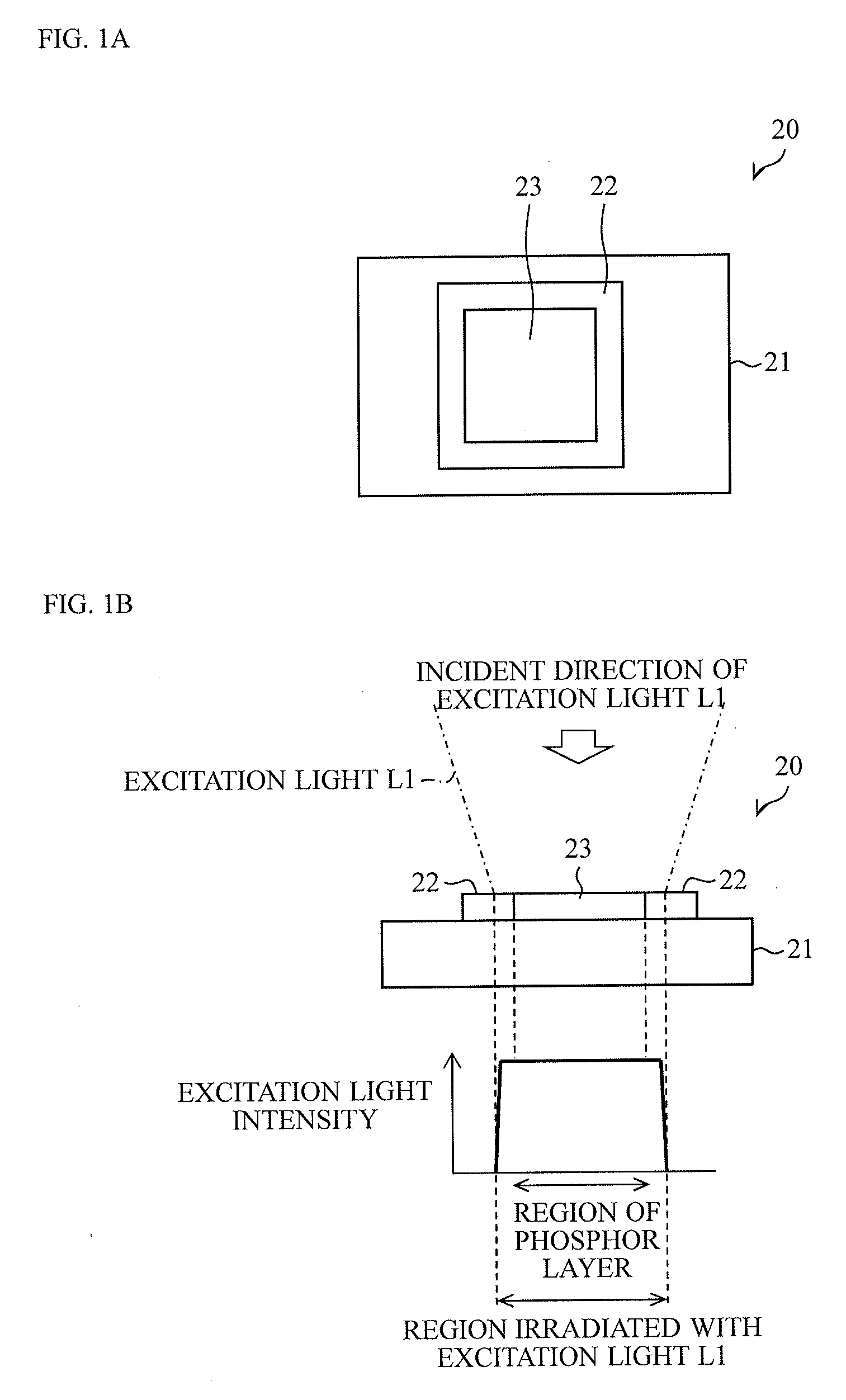Light-emitting device
a technology of light-emitting devices and phosphors, which is applied in the direction of fixed installations, lighting and heating apparatus, instruments, etc., can solve the problems of decreasing the intensity of the fluorescence emitted from the phosphor layer excited by the excitation light, the intensity of the excitation light on the phosphor layer is not uniform, and the intensity of the fluorescence emitted from the phosphor layer is also not uniform, so as to improve the uniformity of the fluorescen
- Summary
- Abstract
- Description
- Claims
- Application Information
AI Technical Summary
Benefits of technology
Problems solved by technology
Method used
Image
Examples
second embodiment
[0062]the present disclosure will now be described with reference to FIG. 4. For convenience of description, components having the same functions as those described in the above-described embodiment are denoted by the same reference numerals, and descriptions thereof are thus omitted.
[0063]In the light-emitting device 1 according to the above-described embodiment, the surface of the phosphor layer 23 on which the excitation light L1 is incident is the same as the surface of the phosphor layer 23 from which the fluorescence is emitted (see FIG. 2).
[0064]In contrast, as illustrated in FIG. 4, a light-emitting device 1′ according to the present embodiment is structured such that a surface of a phosphor layer 23 on which excitation light L1 is incident (back surface) and a surface of the phosphor layer 23 from which fluorescence is emitted (front surface) are at opposite sides. In the light-emitting device 1′, fluorescence emitted from a surface (front surface) at a side opposite to a s...
third embodiment
[0067]the present disclosure will now be described with reference to FIGS. 5A to 5C. For convenience of description, components having the same functions as those described in the above-described embodiments are denoted by the same reference numerals, and descriptions thereof are thus omitted.
first embodiment
[0068]A light-emitting device 1 according to the present embodiment includes a light-emitting unit 320 instead of the light-emitting unit 20 in the structure illustrated in FIG. 2. In addition, a laser unit 10 emits excitation light L1 having a wavelength of about 450 nm. Other structures are the same as those in the
[0069]The structure of the light-emitting unit 320 will now be described with reference to FIG. 5A. FIG. 5A is a sectional view of the light-emitting unit 320. As illustrated in FIG. 5A, the light-emitting unit 320 includes a reflective substrate 21, an absorber (light-emitting-region defining portion, blocking portion) 324, and a phosphor layer 323.
[0070]The absorber 324 absorbs the excitation light L1 and fluorescence. The absorber 324 is formed so as to cover the entire areas of the side surfaces of the phosphor layer 323. Therefore, a portion of the excitation light L1 that is incident on the light-emitting unit 320 at a position deviated from the top surface of the ...
PUM
 Login to View More
Login to View More Abstract
Description
Claims
Application Information
 Login to View More
Login to View More - R&D
- Intellectual Property
- Life Sciences
- Materials
- Tech Scout
- Unparalleled Data Quality
- Higher Quality Content
- 60% Fewer Hallucinations
Browse by: Latest US Patents, China's latest patents, Technical Efficacy Thesaurus, Application Domain, Technology Topic, Popular Technical Reports.
© 2025 PatSnap. All rights reserved.Legal|Privacy policy|Modern Slavery Act Transparency Statement|Sitemap|About US| Contact US: help@patsnap.com



